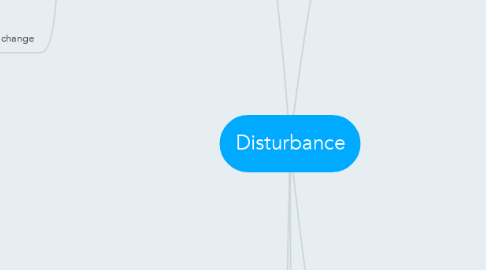
1. Succession
1.1. General stages
1.1.1. Primary
1.1.1.1. Ecosystem development where no ecosystem left / severe disturbance with NO legacies (glaciation, volcano, etc
1.1.2. Secondary
1.1.2.1. Re-establishment/ change over time after disturbance (fires, humans, insects, etcs)
1.1.2.2. Change in ecological function
1.1.2.3. Stages
1.1.2.3.1. Stand initiation
1.2. Models
1.2.1. Floristics
1.2.1.1. Initial Floristics
1.2.1.1.1. All species present after disturbance, dominance changes over time
1.2.1.2. Relay Floristics
1.2.1.2.1. Species introduced as time goes on and conditions become more favourable
1.2.2. Ecological convergence
1.2.2.1. Stands on a landscape may undergo different successional pathways to arrive at one dominant ecosystem type
1.2.3. Linear
1.2.3.1. Directional through the typical successional stages
1.2.4. Poly-climax
1.2.4.1. Multiple possible end points
1.2.5. Retrogressive
1.2.5.1. Ecosystem can change to an earlier stage
1.2.6. Regen complex
1.2.6.1. Patchwork of communities replace each other successively
1.3. Process leading to pattern of change
1.3.1. Stages
1.3.1.1. Colonization
1.3.1.2. Alteration]
1.3.1.3. Displacement
1.3.2. Driving factor
1.3.2.1. Colonizing ability
1.3.2.2. Growth rate
1.3.2.3. Survival/ longevity
1.3.2.4. Competitive ability
1.3.2.5. Tolerance
1.3.3. Species life strategies
1.3.3.1. Old model
1.3.3.1.1. R-strategistss
1.3.3.1.2. K-strategists
1.3.3.2. Newer model
1.3.3.2.1. Ruderal (like r-strategists)
1.3.3.2.2. Competitor
1.3.3.2.3. Stress tolerator
1.3.4. Multiple influences on how succession occurs
1.3.4.1. Disturbance leaves ecological legacies
1.3.4.1.1. ORganisms]
1.3.4.1.2. Organic matter
1.3.4.1.3. Strucures
1.3.4.1.4. vegetation patterns
1.3.4.1.5. patterns
1.3.4.2. Two ecosystems unlikely to have identical sucessional pathways depends on
1.3.4.2.1. Ecosystem characteristics
1.3.4.2.2. Site availability
1.3.4.2.3. Differential species dispersal and establishment
1.3.4.2.4. Differential species performance
1.3.4.3. Plant response to disturbance
1.3.4.3.1. Rowe's classification
1.3.4.3.2. Boreal adaptations to fire
2. Climate change
2.1. Signs
2.1.1. Pest range expansion
2.1.1.1. MPB
2.1.1.2. SBW
2.1.1.3. Invasives
2.1.1.3.1. WPBR
2.1.1.3.2. Dutch Elm Disease
2.1.1.3.3. Emerald Ash borer
2.1.2. Forest fires
2.1.2.1. Link to climate change can't be proven
2.2. Changing veg
2.2.1. Forest Parkland line is at zero line of Climate Moisture Index
2.2.1.1. Precipitation= Potential evapotranspiration (PET)
2.2.1.2. Areas with neg CMI have minimal runoff- increases salinity, leads to variable lake levels
2.2.1.2.1. Effects
2.2.1.3. Boreal in CMI>0 where peatlands can exist. Confires and peatland absent in CMI <0
2.2.2. GCMs indicate drying
2.2.2.1. Thus Prairie and Parkland is expected to move north
2.2.3. Aspen
2.2.3.1. Drough a major cause of dieback in 1990s- was climate change involved?
2.2.3.1.1. Found by CIPHA- significant defoliation by forest tree caterpillar
2.2.3.2. Climate Impacts on Productivity and Health of Aspen (CIPHA) study
2.2.3.2.1. running since 2000
2.2.3.2.2. Monitors health and change in biomass in pure aspen stands
2.2.3.2.3. Major disturbance of aspen growth
2.2.3.2.4. 2001-02 drought
2.2.3.2.5. Aspen experiences many stresses leading to death
2.2.3.2.6. Same stress leading to mortality in Edmonton's urban forest and across Canada
3. Forest structure
3.1. Stand
3.1.1. CWM
3.1.2. Layering
3.1.3. Legacy material
3.2. Landscape
3.2.1. Patch age distribution
3.2.1.1. Driven by frequency
3.2.1.1.1. Has become considerably longer in current circumstances
3.2.1.1.2. western canada burns more frequently, generally has larger fires
3.2.1.1.3. Curve of a snapshot of the landscape can vary greatly based on frequency of burns
3.2.2. Patch size
3.2.2.1. Burnt vs partial vs unburnt
3.2.2.1.1. Depending on year and size of fire, fire may leave more partially burnt than fully burnt
3.2.2.2. Fire size
3.2.2.2.1. Quebec vs Labrador (Hunter 1993)
3.2.2.2.2. Quebec (Bergeron 2002.)
3.2.3. Spatial pattern, connectivity, edges
3.3. drivers pos-distubance
3.3.1. Seed propagule availability
3.3.1.1. prior stand composition
3.3.1.2. legacies
3.3.1.3. timing of disturbance relative to mast seed year
3.3.1.4. adjacent forest composition
3.3.2. establisment
3.3.2.1. species
3.3.2.2. density
3.3.2.3. timing
3.3.2.4. Regneration niche
3.3.3. environmental conditions
3.3.3.1. elevation
3.3.3.2. climate
3.3.3.3. soil type/moisture
3.3.3.4. weather conditions
3.3.3.5. availability of germination sites
3.4. Drives subsequent succession
3.4.1. Legacy community + post disturbance establishment
3.4.1.1. Species traits
3.4.1.1.1. growth
3.4.1.1.2. competitive ability
3.4.1.1.3. tolerance
3.4.1.1.4. longevity
3.4.1.2. Biotic interactions
3.4.1.2.1. competition
3.4.1.2.2. herbivory
3.4.1.2.3. pests
3.4.1.2.4. pathogens
3.4.1.3. Abiotic effects
3.4.1.3.1. climate
3.4.1.3.2. phsiography
3.4.1.3.3. soils
3.4.1.3.4. resource availability
4. Regime
4.1. Type
4.1.1. Natural
4.1.1.1. Insects
4.1.1.2. Fire
4.1.1.3. Blowdown
4.1.1.4. Volcano, flooding, other epic natural disaster
4.1.2. Anthropogenic
4.1.2.1. Harvesting
4.1.2.2. Roads
4.1.2.3. burning
4.1.2.4. Pollution
4.1.3. Can be additive
4.1.3.1. Ex- climate change increases MBP, increases fires
4.2. Extent/ spatial pattern
4.2.1. Influences patches, connectivity
4.3. Temporal frequency
4.3.1. Influences age structure
4.4. Intensity/severity
4.4.1. Magnitude of changes
4.4.2. Which biota affected
4.4.3. Influence legacies, stand scale age structure
4.5. Examples
4.5.1. Fire in Alberta
4.5.2. Root rot creates circular patches in Montana
5. Management
5.1. Species adapted to disturbance regimes
5.1.1. Basis of disturbance based management
5.1.1.1. Emulates natural disturbance
5.1.1.1.1. Landscape scale
5.1.1.1.2. Stand scale
5.1.1.2. Maintains habitat patches that would exist naturally
5.1.1.3. Is very coarse- needs to be combined with fine filter for managing some species
5.1.1.4. Method
5.1.1.4.1. varying rotation length
5.1.1.4.2. manage by cohorts
